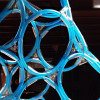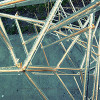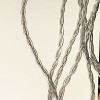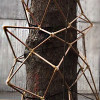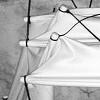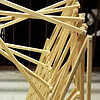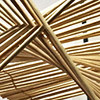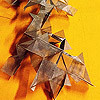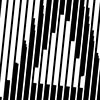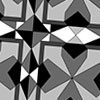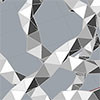The Hose is our last material system of 2014, designed and produced at the Computation-based Basic Design I studio section. We instructed this section together with Can Sucuoğlu and Birgül Çolakoğlu. This group of students succeeded in developing a flexible but strong connection detail. It allowed them to generate the desired macro form quickly. However, the overall look of the final composition should have been much better. Because, it was placed in […]
January 2015
The 2015 Basic Design Studio was one of the good seasons. The project named “Fireball” is an example of high concentration. A group of students developed a material system from a very weak connection detail. The interesting part of the project was making it possible to stand by itself. They created the result purely by experimentation. In the beginning, they decided on the components and the overall geometric composition. So their […]
This student project named Happy Ivy was lightweight but also very strong, a good start for research on fibrous structures. The 2015 group of first-year Basic Design students explains their project as; Arboriform, meaning “something tree-shaped” was the central theme of the project, however, we decided to focus more on the entwining movement of ivy. In order to create a material system that reflects this entwining behavior, we chose to research fibrous […]
This is a student project on Computation-based Basic Design at Bilgi. The group of students completed it in the 2015 Spring semester. This research was very successful in achieving its intended physical performance, which was holding on to a tree designed for (and even near climbing up in some cases). The system is lightweight yet very powerful, holding on but not causing any harm to its “host body“, the tree. […]
This is an unfinished research on textile tensegrity technique, developed at Basic Design I Studio of Istanbul Bilgi University. The result was not satisfactory as a design outcome, but yet an interesting educational experiment. Students explain their project as follows: Coral reefs and corals themselves were starting points of our research. After analyzing some of the coral forms and a couple of studio sessions, we came up with experiments of […]
This project named Two Plus One explains itself very well. The students explained their motivation differently from the rest of the studio. In our Computation-based Basic Design Final Project, we are inspired by Theo Jansen’s Strandbeest sculptures, and we wanted to make our arboriform kinetic. First, we made a copy model of the original kinetic sculpture for ourselves in order to observe its shape, parameters, and movement patterns. We realized that the […]
Student project of the first year Computation-based Basic Design I studio at İstanbul Bilgi University Faculty of Architecture. The contextual background is based on “Arboriform” which aimed to drive students’ design research process. Here is a quote from the student’s presentation: …Many of us do not believe and even do not want to believe in the compatibility of natural phenomena with things done by humans. Nature eliminates unfitted environmental factors while generating new potentialities […]
This year’s first semester at Basic Design Studio was full of surprises. Together with Can Sucuoğlu and Birgül Çolakoğlu, we coordinated 9 student groups in their 4-week final project called “Arboriforms“. “Arbori-” is derived from the Latin word “arbor,” meaning “tree,” and “-form” indicates a shape or form. Therefore, we can understand “arboriform” as an adjective describing something that is tree-like in appearance, structure, or form. For example, one might […]
This is a macro exercise in Rhino, showing that Rhino is pretty much capable of automating some cool text effects. Just copy and paste the below code into the command bar of the Rhino, or open the macro editor by typing macro edit, then paste it there and press play. You’ll enter any string when prompted, then the macro handles the rest of the process. You can play with the […]
Again, we revisited the seamless patterns exercise this semester. This is one of the main exercises of architectural geometry class. We expected to improve students reasoning on generative patterning while they explain their processes step by step. The key element of this exercise is the usage of compass and ruler constructions. However, we didn’t keep this rule limiting their creativity too much. In this activity, we tasked students with developing a personalized […]
This is the Grasshopper definition that generates a tetrahedral helix (also called as Boerdijk-Coxeter helix) but in a funny way. This geometry is also a solution for tangent spheres. I generated the helix using Anemone components for recursion and gave it a little bit of responsiveness. I don’t know if it depends on the speed of your CPU but if it is slow enough, you’ll see the snake game of tetrahedral […]

